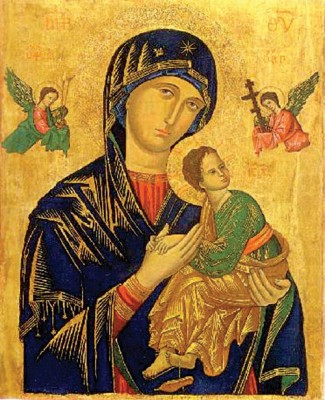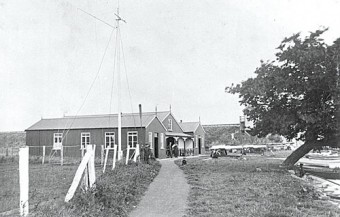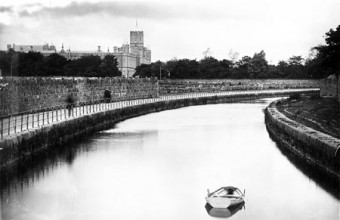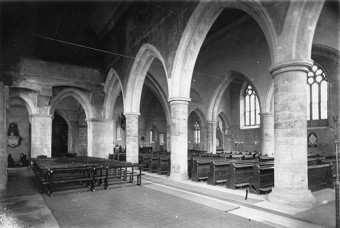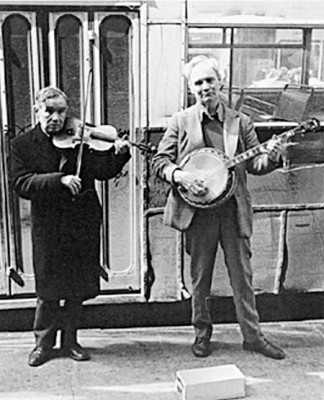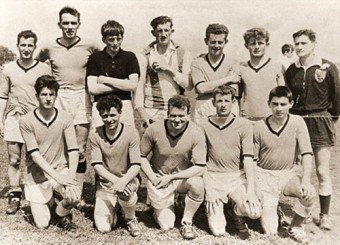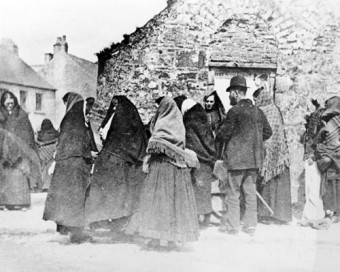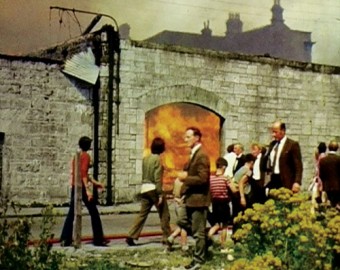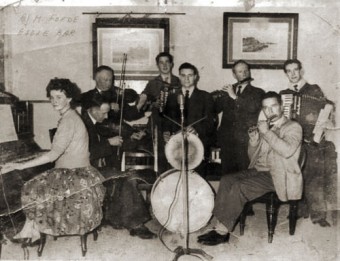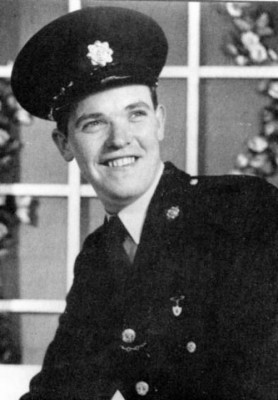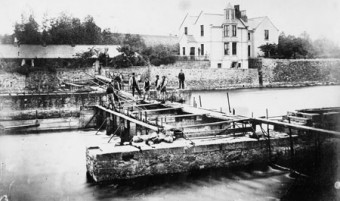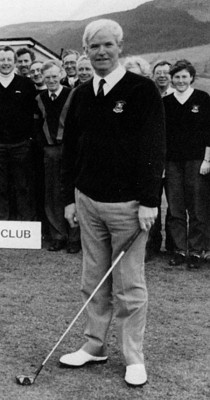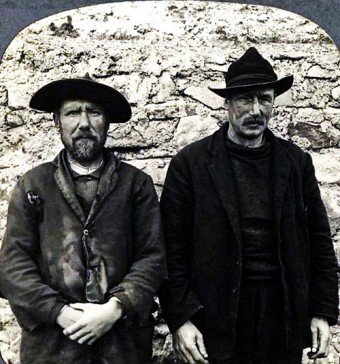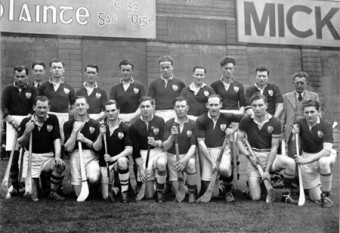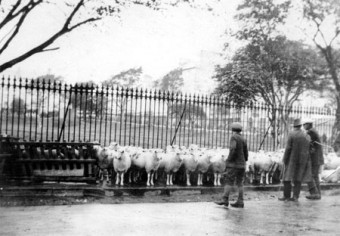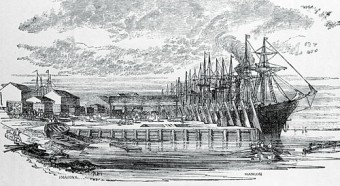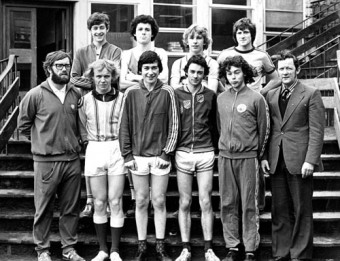Is Ms Jennifer Sleeman a bit of a crackpot?
Thu, Sep 23, 2010
I have always thought it strange why so many women feel isolated from the Catholic Church, when it has at its centre a woman, Mary - the Mother of God. It is not right that many women feel they are ‘second class citizens’ within a church that attempts to reach out to all. Surely without Mary, the New Testament would be worthless. Surely after the Nazarene Himself, the Mother of Jesus, who is venerated by the Catholic and Orthodox churches, is the first and greatest saint in heaven. Mary is revered by all Christian churches, and honoured by Islam. At the very first council of the Church, at Ephesus four hundred years after Christ, she was declared to be the Theotokos, Mother of God (the actual God bearer). But even before that her image, holding the Child, was etched into tombs in the Roman catacombs. Being the Theotokos, Mary could have become remote, unreal from the human experience. After all we are told that she was born free from Original Sin, which as a total ‘theological illiterate’ I don’t fully understand; but I accept the logic that if Mary was not the mother of God, then Jesus was not God. I believe that He was. Yet despite the supreme position of Mary many women feel isolated, uninvolved, as if they have no contribution to make.
Read more ...Taibhdhearc na Gaillimhe
Thu, Sep 16, 2010
On the 1820 map of Galway, the site of the Taibhdhearc was part of the then Augustinian Church. When the present church was built in the 1850s the site became derelict. The late Ned Joyce remembered a large tree growing on the site, a tree which stretched across the street to a tenement known as ‘The Windings’. The occupants used to hang their washing on the tree on fine days.
In 1912 the Augustinians built the present building as a parish hall, which functioned as a social club where they put on dramatic productions as well as playing billiards and table tennis, etc. This club became defunct and, in 1928, a committee of 10 under the chairmanship of Dr Seamus O’Beirne took it over and equipped it as a theatre. Their idea, and that of the Government of the time, was to use An Taibhdhearc and An Céad Cath, the Irish speaking army battalion based in Renmore Barracks, as vehicles for the regeneration and promotion of the Irish language in Galway. The committee invited Mícheál Mac Liammóir and Hilton Edwards to produce the first play which was Mícheál’s own Diarmuid agus Gráinne.
Read more ...The Corrib Club
Thu, Sep 09, 2010
“The Galway Corrib Club held their annual regatta on the splendid river of the Corrib at Menlo. The day was as fine as ‘sunshine and pageantry’ could make it, and the ivy-mantled Castle of Menlo, the residence of Sir Thomas Blake, Bart, was decorated with flags of all nations, and waved gracefully in the breeze. There was not a ripple on the bosom of the lake unless what was created by the oars of the several beautiful little crafts which were constantly scudding up and down the river, freighted with some of Nature’s fairest daughters. There was a band in attendance and during the day discoursed some beautiful music. Great credit is due to the commodore, PT Grealy, Esq, and the members of the club for the satisfactory manner in which the whole arrangements were carried out. After five races between four oared gigs, outriggers and punts, the sports of the day terminated with a duck race, which was most amusing. At seven o’clock, the amusements terminated and the delighted spectators returned home, highly pleased with the day’s sport. Although there were places of refreshment, there was not a man to be seen the worse for liquor, so that the whole affair was a complete success.”
Read more ...The Eglinton Canal
Thu, Sep 02, 2010
In 1498, during the mayoralty of Andrew Lynch, an attempt was made to open a passage from the River Corrib along the Sandy River and through land to Lough Atalia, thus connecting the river to the sea.
Read more ...Galway’s rich heritage
Thu, Aug 19, 2010
This photograph of the interior of St Nicholas’ Collegiate Church was originally taken c1890 and was given us by the National Library. The Leper’s Gallery can be seen over the arches to the left.
Read more ...The Dunne brothers busking in Galway
Thu, Jul 29, 2010
Busking is the practice of performing in public places for tips or gratuities. The earliest buskers in Galway were probably singers who would sing on the street, and then knock on doors in the hope of getting money or food. In the early 20th century, Johnny Doran and his family would move around playing in different places, including the races, and then in the evening outside the Imperial Hotel. Paddy Philbin, who later became a dancing master, would dance for him and they drew big crowds. Later came the Reaney brothers who played in various locations in Galway city and county.
Read more ...Fifty years of soccer in Mervue
Thu, Jul 22, 2010
In the mid fifties, the corporation began to build the houses that make up what we now know as Old Mervue. Many young families moved to the area, and for the children, the open green areas in from Plunkett Avenue, and between Clarke and McDonagh avenues, became their playgrounds. They played all kinds of games here… Gaelic football, athletics, and especially soccer. It was on these green spaces that many well-known footballers first developed and honed their skills.
Read more ...The egg and butter market, Woodquay
Thu, Jul 08, 2010
This photograph of that part of the Woodquay market at the corner with Eyre Street, was taken c 1890. It was here that country women gathered to sell their eggs and country butter. The market had a long tradition in Woodquay even at that time.
Read more ...Some Galway fires
Thu, Jun 24, 2010
The following are some of the fires that occurred in the city in the last century.
Read more ...The Galway sessions
Thu, Jun 17, 2010
Comhaltas Ceoltóirí Eireann in Galway was formed in the mid-fifties by schools inspector Pádraic Ó h-Eidhin and by Dr Galligan. Groups of musicians began to meet in St Patrick’s School, the Industrial School, and Mattie Forde’s Eagle Bar on the corner of Henry Street and William Street West. This represented the first stirrings of general interest in Irish traditional music in the city.
Read more ...In the end the Mayos didn’t say much
Thu, Jun 17, 2010
In the early 1990s the Mayos in Galway were getting so uppity that it was decided that action would be taken. It is believed that Seamus Keating, the legendary Galway city and county manager, and a Tipperary man to boot, was never slow in taking the hard decision. Exasperated by the controls exerted by the Mayos, their prestigious positions in all walks of life in the city, their swagger about the place, and the whingeing by the few Galwegians left on his staff at the unfairness of it all, one day he pressed the red button on his desk.
Read more ...The Queen’s Gap
Thu, Jun 10, 2010
Hardiman tells us, “There was from time immemorial a gap in the river called the Main Gap, through which small boats, sometimes with difficulty, passed up and down the river from the lake to the sea. This particular gap was always kept open from February to August, when all others were shut. The proprietors of the fishery, finding that it diminished the value of the weirs, caused it to be closed. This became the subject of legal contention, but it was finally decided that the gap should be, and it has ever since accordingly been, kept open.”
Read more ...A Saunders still lives in Woodford area
Thu, Jun 10, 2010
Following a recent series of Diary entries about the Woodford evictions in August 1886, and in particular the siege of ‘Saunder’s Fort’ I believed there was no descendant of the brave Saunders’ family living in the Woodford area today. I was very pleased to receive the following e-mail from Tom Page:
Thanks for your interesting articles on the Woodford evictions. My name is T J Page and I am a great-grandson of Thomas Saunders. My mother who is now 82 is his granddaughter and before she married my father Thomas Page she was Merlin Saunders - so there is still a living Saunders relative. She lives in Rossmore, near Woodford close to Lough Derg and 5 or 6 kilometres from the original site of the eviction of her grandfather Saunders Fort.
Read more ...Claddagh fishermen
Thu, May 06, 2010
There was a very good ethnological study on the fishermen of the Claddagh published in the Ulster Journal of Archaeology in 1854, which among other things stated that: “The people of the Claddagh are, in my opinion, purely Irish, of the most ancient Celtic type. The village at the present day is like any ordinary Irish village, and that it was a mud city when Rome was being founded, is more than probable. That the Claddagh men are not Spaniards any one might see at a glance; and it is astonishing to me how the theory of their Spanish origins could have kept ground for so long. A Spanish face may still be seen in and about Galway — once in a week or so; but it appears to me that the Claddagh, above all other people, had no intermarriage with Spaniards.
Read more ...Galway hurlers, 1949
Thu, Apr 29, 2010
There is no game on earth to compare with hurling, for speed, skill, artistry, movement, and athleticism. Fitness also plays a big part in the game. The Galway teams who played in the 1923 and 1924 finals spent an incredible almost 13 weeks together in Rockfield House, between Craughwell and Athenry. There, they lived like Trappist monks with a 6am reveille sounded by team manager and county board chairman, Tom Kenny, who arrived each dawn in his pony and trap from Craughwell. Out of bed and into a cold bath was the order of the day, and the first exercise was followed by a drink of cold water laced with ‘health salts’ before a solid hour’s toning up physical exercises supervised by trainer Jack Berry. Breakfast of the plainest food, with brown bread the major ingredient, followed at 10am. After an hour’s rest, the team and substitutes played and practised hurling with the free-takers perfecting their art with countless shots at goal from all distances and angles.
Read more ...Sheep fair, Eyre Square
Thu, Apr 01, 2010
Like most towns and cities in Ireland, Galway had a lot of fairs and markets. They were a vital part of life and the economy of the city, helping to feed the local population and provide much needed cash for farmers in the hinterland.
Read more ...Steam Wharf, Galway, c1850
Thu, Mar 18, 2010
A report on Galway Bay and Harbour published by the House of Commons in 1838 makes for interesting reading.
Read more ...Queen’s College Galway
Thu, Feb 25, 2010
In 1845, when Sir Robert Peel was in office, an act was passed providing for the establishment of three Queen’s colleges “In order to supply the want, which has long been felt in Ireland, of an improved academical education, equally accessible to all classes of the community without religious distinction”. Three faculties were established in each… arts, law, and physic (medicine). The colleges were strictly undenominational, and the professors were forbidden by the statutes to make any statement disrespectful to the religious convictions of their classes, or to introduce political or polemical subjects.
Read more ...Cross country champions from Móinín na gCíseach
Thu, Feb 11, 2010
Galway Community College in Móinín na gCíseach opened on September 1 1969. Jack Mahon was the first principal and among the staff were vice-principal Tom Gallagher, Philomena Burke, Joe Rooney, Peter Keady, Seán O’Donnell, Noel Carpenter, Joan Ryan, Myra Ryan, and Philip Cribbin. The aim was to create a caring atmosphere where students were and are encouraged and helped to develop their unique talents and gifts, by providing the academic and vocational skills that enable them to attain their maximum potential and participate fully as good citizens in society.
Read more ...